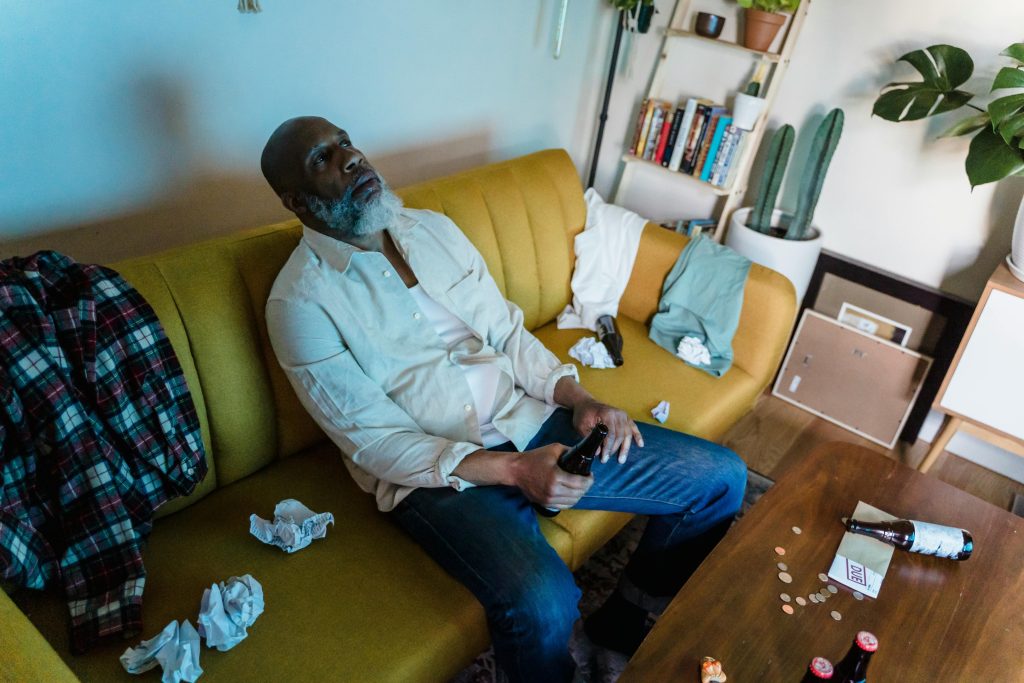How to Cultivate a Simple Lifestyle Through Reducing Compulsive Shopping

The Compulsive Shopping Phenomenon
In contemporary society, characterized by relentless marketing strategies and an overwhelming emphasis on consumerism, compulsive shopping has emerged as a prevalent issue for many Americans. Statistics suggest that approximately 6% of adults in the U.S. struggle with compulsive shopping, which can lead to devastating financial repercussions. Individuals often find themselves trapped in an insatiable cycle of purchasing items that serve little real purpose in their lives. This behavior not only drains their finances but can also lead to anxiety, guilt, and discontent as they grapple with the consequences of their spending habits.
The Simple Lifestyle Solution
One effective countermeasure to compulsive shopping is adopting a simple lifestyle. This approach involves thoughtfully reassessing your needs and desires, thereby fostering a more intentional manner of living. By consciously choosing to minimize unnecessary expenses, you can liberate yourself from the burdens imposed by consumer culture. The benefits of embracing simplicity are far-reaching:
- Financial Freedom: Reducing spending enables individuals to allocate more resources toward savings, investments, or experiences that enrich one’s life, rather than accumulating material items that may quickly lose value.
- Reduced Stress: A decluttered environment fosters a sense of calm and clarity, as studies indicate that mess and clutter can heighten feelings of anxiety and overwhelm.
- Environmental Impact: Purchasing fewer items contributes to a decrease in waste, promoting a sustainable lifestyle that benefits not just the individual, but also the wider community and planet.
Fostering Simplicity
How can you begin to cultivate simplicity in your everyday life? The journey starts with developing awareness and intention. It is crucial to understand the triggers behind your shopping behaviors—be it emotional responses, social pressures, or marketing influences. By identifying these root causes, you can begin to seek healthier alternatives that fulfill your needs without spiraling into consumerism. For instance, consider engaging in activities like community volunteering, exploring local nature trails, or delving into hobbies that do not require significant financial investment.
Throughout this article, we will delve deeper into practical strategies to help you regain control over shopping impulses. From setting clear financial habits to redefining your relationship with possessions, these actionable steps can empower you to embrace a minimalist lifestyle that resonates with your values while enhancing your overall quality of life. By taking this path, you’ll not only find peace of mind but also inspire those around you to reconsider their own consumerist habits.
DIVE DEEPER: Click here to discover daily rituals for a simpler life</p

Understanding Your Triggers
To successfully embark on the journey toward a simple lifestyle and curb compulsive shopping tendencies, it is essential to first identify the underlying triggers that prompt these shopping behaviors. Many individuals might shop out of boredom, stress, or even a social desire to fit in. Recognizing these triggers is the first step in breaking free from the cycle of compulsive consumption.
Once you grasp what encourages you to shop, you can take proactive measures to mitigate these urges. For example, if you find that stress at work leads to impulsive online shopping late at night, consider instituting a self-care plan. Whether it’s regular exercise, yoga, or indulging in a favorite hobby, redirecting your energy can significantly decrease the urge to shop unnecessarily.
Practical Strategies for Reducing Compulsive Shopping
Transforming your approach to shopping requires practical strategies that encourage mindful spending. Here are several actionable steps you can incorporate into your daily routine:
- Create a Budget: Establish a monthly budget that includes essential expenses and allows for discretionary spending. Stick to this budget to regulate your spending patterns.
- 30-Day Rule: Before making any non-essential purchase, impose a waiting period of 30 days. This technique gives you time to evaluate whether the item is truly a necessity or just a fleeting desire.
- Unsubscribe from Retail Emails: Limit exposure to tempting promotions by unsubscribing from marketing emails and social media feeds that encourage shopping.
- One In, One Out Rule: For every new item you bring into your home, commit to removing an existing one. This practice promotes deliberate and meaningful purchases.
Another effective way to foster an intentional shopping practice is to leverage technology. Various apps help track spending and even offer insights into shopping habits. By being more aware of your purchasing history, you can better understand areas where you may be overspending or making impulsive decisions.
Mindset Shift: Redefining Value
To combat the pervasive influence of consumer culture, it is crucial to redefine your perception of value. Instead of associating worth with material possessions, begin to appreciate experiences, relationships, and personal growth. Research indicates that experiences often provide lasting happiness compared to transient joy derived from physical items. Consider investing in travel, classes, or community events that enrich your life and create meaningful memories.
Ultimately, the journey toward cultivating a simple lifestyle through the reduction of compulsive shopping is about becoming intentional with your choices. By actively working to understand your triggers, implementing practical strategies, and shifting your mindset, you not only regain control over your shopping habits but also pave the way for a more fulfilling and financially stable life. The skills acquired throughout this transformative process can empower not just you, but also those around you, inspiring them to rethink their own consumption patterns and advocate for simplicity.
| Category | Key Features |
|---|---|
| Mindful Spending | Fostering awareness of purchases, ensuring they align with personal values. |
| Clutter Reduction | Creating physical space by minimizing excess items and fostering peace of mind. |
| Financial Freedom | Having more disposable income to save or invest in meaningful experiences rather than material possessions. |
| Sustainable Choices | Encouraging eco-friendly products and ethical brands in purchases. |
| Community Connection | Fostering relationships through shared experiences rather than consumerism. |
Implementing these strategies presents an opportunity to embrace a simpler lifestyle by targeting the root causes of compulsive shopping habits. Engaging in mindful spending not only benefits personal well-being but also promotes accountability in financial matters. As one starts to appreciate financial freedom, the notion of connecting with community efforts becomes even more enriching, emphasizing shared activities over the pursuit of the latest consumer trends.The reduction of clutter leads users to a serene home environment, resulting in a better mental state. With a conscious approach towards making sustainable choices, consumers are also poised to positively impact the environment. Investigating these insights into mindful living gives readers valuable perspectives on how small changes can yield substantial benefits in their quest for simplicity.
DISCOVER MORE: Click here for daily rituals to enhance your simple living
Finding Fulfillment Beyond Material Possessions
As you embark on your journey toward a simple lifestyle, understanding that fulfillment doesn’t have to come from the latest gadgets or clothing is pivotal. Numerous studies emphasize that the pursuit of happiness tied to material goods often leads to fleeting satisfaction. Instead, focusing on connections, experiences, and personal growth provides a more sustainable path to a fulfilling life.
A profound way to explore this idea is through the concept of minimalism. Minimalism encourages individuals to declutter their lives—not just in terms of physical space but also regarding emotional and digital clutter. If you’re feeling overwhelmed by the constant noise of advertisements or the pressure to keep up with societal standards, consider a digital detox where you limit your interaction with social media and shopping websites. Research suggests that less exposure to consumer culture can help reduce the impulse to buy, allowing for a clearer perspective on what you truly need.
Explore Alternative Sources of Joy
Shifting focus to experiences rather than possessions can redefine your shopping habits. Engage in activities that bring you joy but don’t require spending money, like hiking in a local park, volunteering, or hosting a potluck dinner. These experiences contribute to your well-being and can often create lasting memories, diminishing the urge to shop. When you fill your life with enriching experiences, your desire for unnecessary purchases can diminish significantly.
To better illustrate this, consider the findings from a study conducted by the National Endowment for the Arts, which showed that people who engage in creative activities report higher levels of life satisfaction. Enroll in community classes—whether it’s painting, cooking, or dancing—to foster new skills and relationships. These classes not only provide personal growth but also keep you engaged, minimizing the time and emotional energy spent on shopping.
Accountability and Support Systems
Another effective strategy for reducing compulsive shopping is to build a support system. Sharing your goals with friends or family can create a sense of accountability, making it less likely for you to stray from your intentions of living simply. Form or join a group focused on simplifying life, whether through discussions, sharing resources, or even swapping items you no longer need. Engaging with like-minded individuals fosters a community based on shared values that encourages each member to resist the urge to shop unnecessarily.
Moreover, consider consulting with a financial advisor or a coach who can help you sort through your spending habits. Professional insights can provide tailored strategies to reduce compulsive behaviors. They might even highlight areas of your financial life that could benefit from immediate changes. Having an external perspective can be incredibly valuable in sustaining your long-term goals of creating a simple lifestyle.
Reassessing Your Shopping Environment
The environment where you shop can significantly influence your purchasing decisions. Take steps to reassess your shopping environment. Avoid frequenting places like malls or high-end shopping districts that may induce a sense of necessity to buy. Online shopping can be just as problematic—delete shopping apps from your mobile devices and leave your credit card at home when heading out. This small change can drastically reduce the temptation to indulge in impromptu shopping sprees.
Ultimately, the path to a simple lifestyle through reducing compulsive shopping is not merely about self-denial; it is a holistic transformation of how you view your priorities. By committing to finding joy in experiences, building accountability, and reassessing your shopping environment, you begin to cultivate a life that feels rich in meaning rather than material wealth.
DON’T MISS: Click here to learn how to create efficient multi-functional spaces
Embracing a Simple Lifestyle
In conclusion, cultivating a simple lifestyle by reducing compulsive shopping is not merely an exercise in restraint but a profound shift in mindset. By recognizing that true fulfillment does not stem from material possessions, you can redirect your focus toward experiences that enrich your life and foster genuine connections. Embracing minimalism, engaging in alternative sources of joy, and building a reliable support system are essential strategies that empower individuals to break free from the chains of consumerism.
As society continues to evolve with relentless advertisements and consumer culture, taking proactive steps to reassess your shopping environment is more important than ever. Consider how your surroundings and habits influence your purchasing decisions; small adjustments can yield significant results in your overall well-being. Remember, living simply is about prioritizing what truly matters—whether that be nurturing relationships, indulging in hobbies, or creating lasting memories rather than accumulating goods.
Moreover, seek out community and accountability. Surrounding yourself with like-minded individuals encourages persistence in your commitment to a simpler life. Explore resources, online forums, or local groups to share your experiences and inspire one another. In the end, your journey toward simplicity not only benefits you but can positively influence those around you, creating a ripple effect that fosters a culture of mindfulness and gratitude.
As you embark on this rewarding journey, keep in mind that the goal is not to eliminate joy from your life but to discover deeper, more meaningful sources of happiness. A simple lifestyle is within your reach; it starts with a single step toward a life enriched by experiences rather than possessions.


